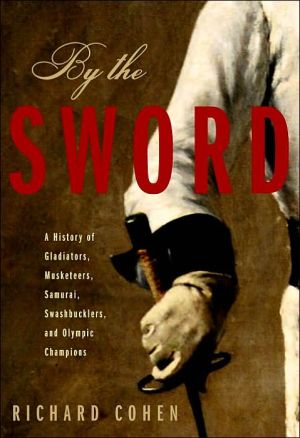

 |

|

The average rating for By the Sword A History of Gladiators, Musketeers, Samurai, Swashbucklers, and Olympic Champions based on 2 reviews is 3 stars.
Review # 1 was written on 2007-03-21 00:00:00 Wayne Lander Wayne LanderThis is a book that could finally have unseated Egerton Castle's appallingly Victorian "Schools and Masters of Fence" as the definitive book on the history of swordsmanship. Instead, the author often parrots the same misconceptions or invents entirely new ones. It is an entertaining and engaging book, but those looking for an accurate history of swords and sword-fighters would be better served to read Sydney Anglo's "Marital Arts of Renaissance Europe" and J. Christoph Amberger's "Secret History of the Sword." All in all, this book is nothing special, and should be regarded as a decently-written curiosity or tribute by the author to a subject he obviously loves rather than a reliable hoplological work. |
Review # 2 was written on 2014-08-20 00:00:00 Carole Robertson Carole RobertsonWay before the entire aspect of time was even concieved, mankind began its tryst with weapons. The simple yet effective cudgels of the early humanoids would have been the precursors of great waves of destruction in the ages to come. As humans developed, so did their weapons from cudgels to spears until the advent of metallurgy. Then came that groundbreaking find : the sword. The one weapon which redrafted all the rules of private violence. Till the time gunpowder became commercially available and the gun became the weapon of choice, this sharp object ruled the roost of being both a lawmaker and a lawbreaker. As time went by, soceities brought violence and aggression under the aegis of Governments and the armed services and the vigilantes disappearead slowly yet surely. Richard Cohen's brilliant book tells the story of the sword as it evolved from being man's best friend to attaining the same status as a cricket bat or a soccer ball. The detail to which this book goes is practically breathtaking. Personally other than viewing pieces on display at the museums and on the movie screens, I did not know much about the sword. My knowledge was limited to the name of King Arthur's legendary weapon. To such an untrained mind, the content of this book was a literal treasure chest. Richard Cohen begins at the time of the Greeks and tells us the history of Europe through the eyes of the sword. It is a bloody and messy affair choke full of fencing and duels. The rise and fall of the weapon in England, Italy and France are given the maximum importance through the chapters.The knowledge however is not limited only to historic names and figures. We also take a tour of the literary characters and their life and times : Charles d'Artagnan, The Count of Monte Cristo and Zorro are but a few characters who tip their hats at us as we pass them by. These men of fiction also contributed tremendously to the unrivalled popularity of the weapon. There is one chapter in this book about a country where the sword ceases to be a weapon. It attains an ethereal existence, something that transcends the planes of mortality. The country that elevated the sword to a near mythical status : Japan. Whereas the Europeans saw a weapon, the Japanese saw a piece of their soul. Tracing the course of history through Tokugawa Ieyasu and the legends of Japan to the time of the last Shogun's surrender is a whirlwind chapter. I rate this to be the finest part of the whole book. The remaining half of the book is almost fully devoted to the establishment of fencing as a respected Olympic sport. It is a story of two World Wars, Mussolini's attempts at Fencing, the resurrection of the sport in Germany following the Third Reich and about America dethroning the others and becoming a serious contender in the 20th century. The research is exhaustive but the author takes the necessary steps to not make it sound like a lecture. If you ever chance across this book and do not fancy reading the entire book, then just read the footnotes. They are truly brilliant anecdotes of the history of the weapon. Men of the class of Casanova, Karl Marx, Bismarck, Ulysses Grant and Darth Wader make their appearances in these little tales. I had countless hours of fun with these notes. As the book nears its end, the focus almost completely is on Olympic games and since I am not much of an Olympics enthusiast my attention kept wavering at places. This though cannot be helped for the history of this weapon is not complete without mention of the Olympics. It impressed me enough to pick up an umbrella, point it at the mirror and shout en garde ! (Nah I am just kidding....or maybe not !) The best summation to this book is from Hamlet Act V, Scene I : King : Come, begin, And you judges beare a weary eye. Hamlet : Come on Sir. Laertes : Come on Sir. They play. |
CAN'T FIND WHAT YOU'RE LOOKING FOR? CLICK HERE!!!